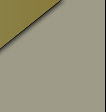| |
back

Philip C. Curtis
The Parade, 1965, oil on canvas, 31 x 43.” Collection of the ASU Art Museum. Gift of Mrs. Clare Boothe Luce. |
Philip Curtis (1907-2000) was among the most important American surrealists working in the American Southwest. Creating evocative compositions of figures in barren landscapes, the arrangements suggest theatrical sets with players who pass one another but rarely interact. As in this work, he often includes circus elements, but the figures hardly seem playful. Instead, the work suggests an unspoken loss or a loaded moment frozen in time. The barren trees and threatening sky add to the sense of loneliness. It is as if the soundtrack of the work has been slowed and the figures, somewhat mechanical, are nearly at a standstill.
Curtis was a key figure in the development of the artistic life of the city of Phoenix, where he was venerated for his work and support of the arts. He was a founder of the Phoenix Art Museum and a perennial figure in the area for more than half a century. In 1997, the ASUAM presented an exhibition of the work of Philip Curtis from Phoenix-area collections.
Marilyn A. Zeitlin
|
|
 |









